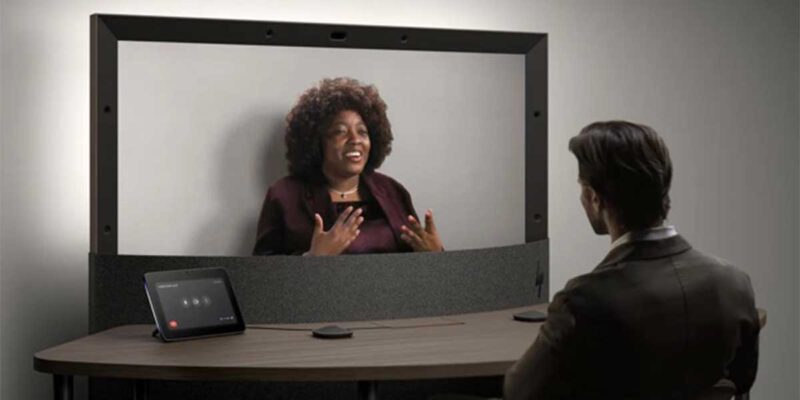Conference Space Stakeholders — Trying to Please Everyone
 In my last article, I spoke of the need to design the spaces we deal with not by thinking about the tech stack, but instead from the perspective of an experience. But in order to do this, we need to understand WHOSE experience we are referring to. For the most part, when we design a space, we do so in order to create something for the users to use. What we don’t pay near enough attention to is all the other folks who will have to touch, interface or collect data about this space. And depending on the size/age of your organization, these other folks may not be a part of the equation. But eventually all of us will hit a wall where suddenly the business realizes just how much money is invested in these spaces and will want a far more comprehensive accounting than we are able to provide. So it is critical that we try to understand who these other stakeholders are and incorporate their needs to ensure long-term success. To be clear, this is by no means a definitive list. We could likely go on for days with all the variations and sub-groups. What this is intended as is merely a high level overview that will get us thinking so that this becomes a part of the overall process.
In my last article, I spoke of the need to design the spaces we deal with not by thinking about the tech stack, but instead from the perspective of an experience. But in order to do this, we need to understand WHOSE experience we are referring to. For the most part, when we design a space, we do so in order to create something for the users to use. What we don’t pay near enough attention to is all the other folks who will have to touch, interface or collect data about this space. And depending on the size/age of your organization, these other folks may not be a part of the equation. But eventually all of us will hit a wall where suddenly the business realizes just how much money is invested in these spaces and will want a far more comprehensive accounting than we are able to provide. So it is critical that we try to understand who these other stakeholders are and incorporate their needs to ensure long-term success. To be clear, this is by no means a definitive list. We could likely go on for days with all the variations and sub-groups. What this is intended as is merely a high level overview that will get us thinking so that this becomes a part of the overall process.
Who are these stakeholders?
When we talk about the stakeholders, we have to think about people who have a vested interest in that space. Most of the time, all we think about is the folks that will use it. And while this is a critical stakeholder… not thinking about and planning for the others will inevitably come back to bite us later on. And to be clear, we could spend quite a bit more time talking about each of these groups and their sub groups. However, for the most part, we have four distinct groups:
- The users
- The room owners
- The support team
- The AV team
Let’s take a quick look at each of these groups.
The Users
The first and most obvious one is the users, the ones that have to live with the room day in and day out. And in general, that experience I talked about is primarily thought about in their frame of reference. So we think about what needs to be in the room as far as tech (both high AND low tech — because let’s be honest, whiteboards are still king in many places). But here is what I was getting at about designing an overall experience: When we add technology to the room, we tend to make it fit wherever it fits. But we focus on that default tech stack being ADDED to the nice shiny room. That room was designed with careful attention to colors, fabrics, furniture, lighting, etc. so we have a design within a design, as opposed to really stepping back and asking how those two fit seamlessly together. This can affect window treatments, where and what kind of conduit is added, overall lighting, etc. And this holistic approach has to also take into account that while the room may not get a rebuild for anywhere from six to eight years, the technology would likely be gutted twice in that time frame. So the underlying infrastructure has to be able to support whatever that future holds.
One last point to make on the users: While most of your conference rooms are generally as standardized as you can make them, there will always be outlier users that have special needs and either push us to grow that technology stack, or create a need to have rooms that have extra stuff. So by no means is the term “user” a homogenous identifier.
The Room Owners
After the users (and sometimes before) we have to focus on those parties that own and pay for all this… management/finance/real estate… the folks who pay for and track all those elements. We need to be able to report on the CURRENT value of that investment and the age of the investment. We need to be able to know how many TVs we own, as well as how many need to be replaced in the coming year. We need to be able to accurately project for future costs and update as we go along. We need to be able to tell people not just how often the rooms are in use, but also how often the tech is used… or potentially even how efficiently it is all used (three people in a room that seats 20 anyone?) so that we can quantify the value of that investment. And this can be far far more difficult than we realize.
I worked at one organization and when I started, nobody could even tell us how many conference rooms we had. 😳 And as we started to dive into that particular problem, it just got worse and worse. So any question I was asked by the folks in management or finance really had no answer, initially.
You have two dragons to slay… and they are not small dragons. Accurate/current inventory of conference room spaces is the first. And the second is the inventory of the technology in those spaces. In a later article, I will get into just how comprehensive the list of things we need to capture in an ideal state is. Once we have these dragons under control, ONLY THEN can we accurately report and forecast for the future. I have talked to numerous companies where they thought they had a solid picture, only to find out they didn’t at all. Only as you peel back that onion do you realize that there aren’t more layers… there are more onions!
The Support Team
Another key stakeholder is the support team. This may be the AV/VC team, it may be the helpdesk, it might be in-house or it might be outsourced. But if we didn’t incorporate the ability to support the space as completely as we can, then we will have issues. If our systems are designed well, then most problems in a space are pretty simple. Volume on the TV, wrong input, camera was turned off… and on down the list. Nowadays, there are very few issues that cannot be resolved remotely. However, without the right tools on the back end, being able to QUICKLY remotely access/diagnose/resolve is a pipe dream. And we are back to either sending a person running across campus, trying to talk a (generally pretty annoyed) user through the troubleshooting and the fix or having to punt users to an alternate room. The good news here is that there are some great options that can put most of that technology stack into a remotely accessible dashboard. It can also be done in a way in which problems can either be solved automatically (through resetting the room at the end/start of each meeting) or by a remote help desk technician who can easily see and QUICKLY resolve the issue. This has been an area that has really been evolving quickly. The really good news is that while we have very good solutions from the usual suspects (Extron, Crestron, AMX/Harman) we also have some excellent solutions from up-and-coming (at least in control) vendors such as Utelogy, Barco and others. (This single subject could spawn at least a few different articles.)
The AV Team
The last major stakeholder group is the team that is putting the entire package together. This one is interesting as it is a combination of the internal AV team AND the external vendors that we use to build out the rooms. We need a few things when we build/refresh rooms. We need to keep costs KNOWN! (I deliberately did not say low. The right investment will more than pay for itself.) With the right design, we will have a good grip on costs and be able to accurately budget costs.
Keep in mind that the cost to build a room in Chicago is completely different than the cost to build that room in Sao Paulo. This is also the place where standards run into a bit of a wall. I may have standardized on ACME monitors in North America, but they are hard to find and twice the cost in India, so my “standards” can fall apart as I have to make use of “ICME” monitors there. In a world of pure standards… this causes us some pain, but if we are standardized on an experience and we are primarily focused on a 75” 4K display as opposed to an ACME 75″ 4K display, then we have flexibility while still keeping the experience mostly the same. The last part of this is the we also need to be able to get the work done quickly! So things like conduits/cable pathways and reinforced walls where TVs will go, extra network drops to the room in advance… all these things allow us to both control those costs and ensure that we can get rooms done quickly. So if we design the room properly at the outset, we are ready for just about anything.
Summary
So just as a recap, here is a quick list of those stakeholders and what they want out of the room.
The Users
- Consistency
- Clear instructions
- RELIABLITY
- Easy to find the right room with the right equipment
The Room Owners
- Costs – both up front and on-going maintenance/operation
- Asset tracking
- End of life
- Room usage data
- Future forecasting
Support/Helpdesk
- Remote access
- Automation
- Reporting
The AV team
- Overall room design
- Consistent BOM
- Clear QA certification
The more we think about and plan for the future, the greater our ability to actually meet those future needs.
Have I missed anyone major? What are your thoughts? What does your org/experience look like through this lens?
In the next article I will take a look at the cost of meetings. We all know the cost to build out a room in our org… what are the cost of skimping? What’s the cost of a room that takes a minute longer to start a meeting?
Thanks for reading and please let me know what you think. This is only my perspective and I would love to get others.




